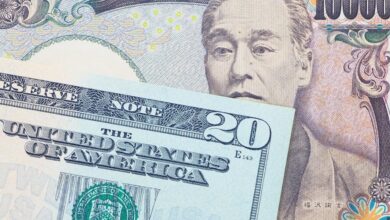Dollar hovers near 7-week high as Fed cut bets shift to May

The U.S. dollar index, which measures the currency against a basket of six major peers including the euro and yen, slipped 0.07% to 103.54 in early Asian trading, giving back a little of Wednesday’s 0.19% advance.
It remains close to the recent high of 103.82 touched on Monday of this week and Tuesday of last week, and previously not seen since Dec. 13.
The dollar has been buoyed by U.S. economic data suggesting the Fed can wait longer before cutting interest rates.
Powell gave the currency another push overnight by calling a cut in March “not the base case.”
“I don’t think it’s likely the committee will reach a level of confidence by the time of the March meeting” to ease policy, “but that’s to be seen,” Powell said at a news conference after Fed officials left rates unchanged but dropped a longstanding reference to possible further hikes in borrowing costs.
“We can forget about any more tightening,” said Art Hogan, chief market strategist at B. Riley Wealth in New York.
However, the timing of a rate cut “has been pushed out to what had been the fringes of consensus,” Hogan said.
Traders are now pricing in a 38% probability the Fed will cut rates in March, down from 59% ahead of the Fed decision. It has fallen from 89% a month ago.
The euro eased 0.06% to $1.0811, edging back toward Wednesday’s low of $1.0795, its weakest since Dec. 13.
Against Japan’s currency, the dollar drifted 0.06% lower to 146.81 yen, adding to Wednesday’s 0.47% decline.
The currency pair tends to track U.S. long-term yields, and the 10-year Treasury yield stood at about 3.95% on Thursday, down from Tuesday’s closing level of 4.057%, despite Powell’s less dovish tone.
U.S. yields, which move inversely to bond prices, had dipped before the Fed decision, as shares of New York Community Bancorp plunged after it cut its dividend and posted a surprise loss.
Investors snapped up U.S. Treasuries amid concerns about the health of other regional lenders.
“It was certainly striking that the biggest move in UST yields was hours before the FOMC rather than after,” said Sean Callow, a foreign-exchange strategist at Westpac.
However, “if markets regard the knee-jerk response to the regional bank news as an over-reaction, then the less dovish FOMC will be the key story in coming days, supporting the U.S. dollar,” he added.





